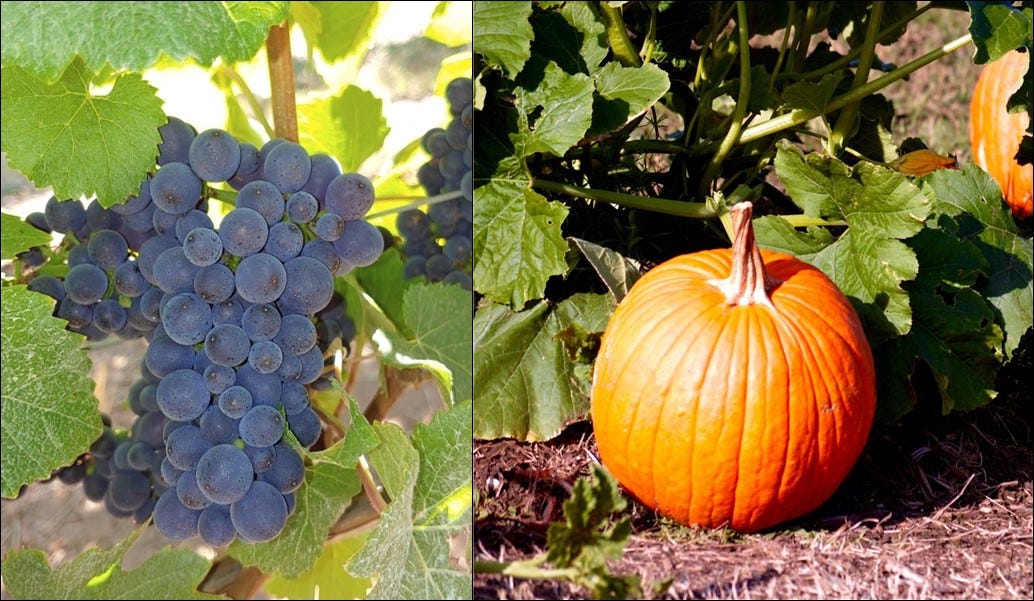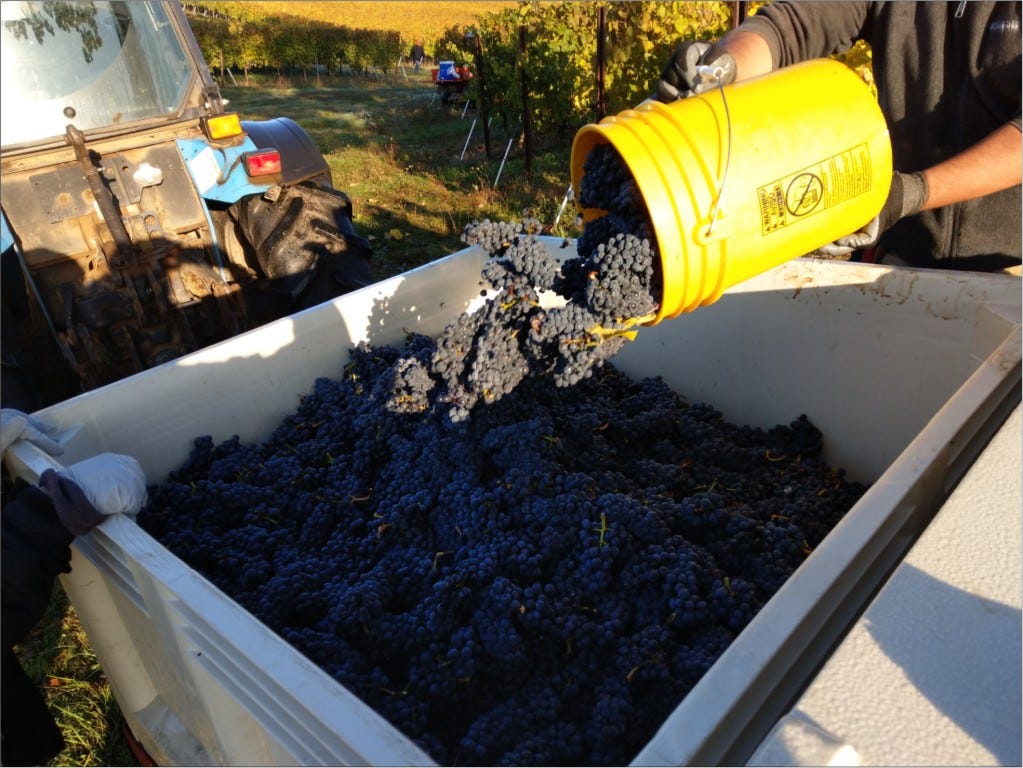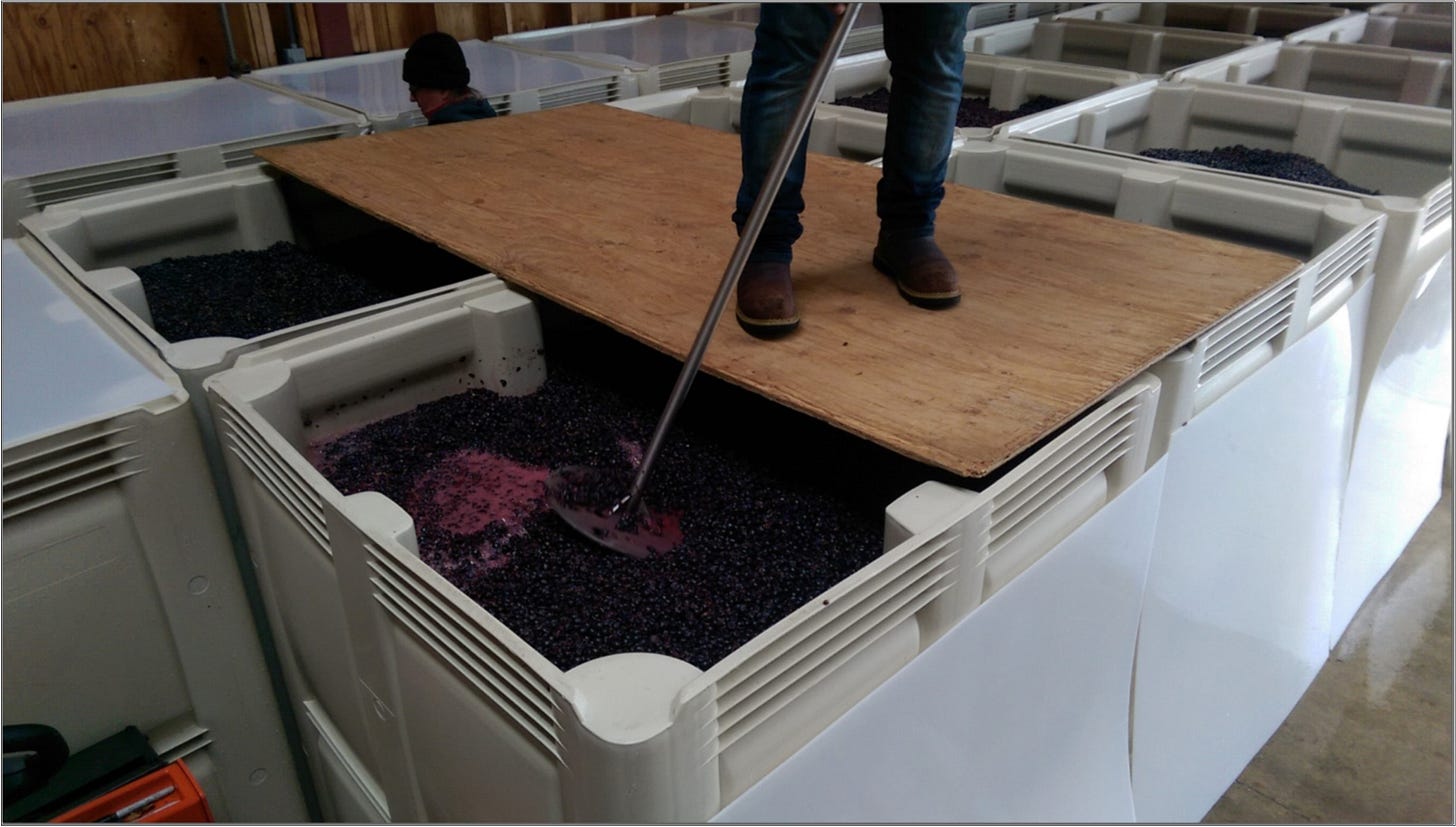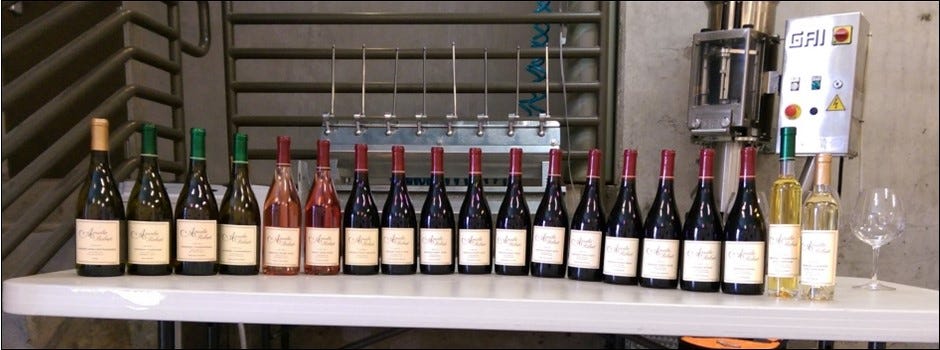Playing Poker with Mother Nature
Hello and Welcome,
This is an Amalie Robert Estate A-List Release Weekend! A Farming bLOG FLOG communication from Dena & Ernie @AmalieRobert Estate! Oregon Willamette Valley Pinot Noir.
It’s that special time of year when the Great Pumpkin rises out of the most sincere pumpkin patch and flies through the air… Ok, wait that’s not the right agricultural endeavor.

We are talking about wine berries and the Great Cluster Pluck! It’s that time of year for harvest, but what exactly are we harvesting? Are these wine berries the sublime and ethereal beginnings of sublime and ethereal wines? Or is the smoke exposure event from mid-September going to reappear at the moment of truth in the glass? No one really knows for sure how this is going to play out. Having the most sincere patch of vines, while a very worthy goal, is not going to help this year…
The wildfire smoke that permeated the Willamette Valley this September has most assuredly permeated the wine berry skins. Once that happens the smoke molecules are tightly bound to sugar molecules inside the wine berry. During fermentation the sugar molecules are vanquished, and alcohol is produced.
If there were smoke molecules inside the wine berries, they are now most assuredly in the finished wine. If these molecules are volatile, then you can smell and taste them. If they are not volatile you cannot smell and taste them. The only way to know for sure if your wine has these molecules is to send a sample of a fermented wine to a lab to test for certain compounds associated with smoke taint. Here is an image of the ETS Laboratories website at of September 28, 2020.

The good news is that ETS labs, the “go to” wine lab we rely upon, can test for these compounds. The bad news is that our results would likely come back in November. The harvest window for Pinot Noir will be long closed by then.
“We are currently reporting from grape berry smoke impact samples received 28 August, and from wine samples received 3 September. Grape berry samples received early today are projected to be reportable in mid November, and wine samples received early today are projected to be reportable by 7 November…” ETS website September 28, 2020.
This means we can know if our wines have the markers for smoke taint, but due to the backlog of everyone else wanting to know the same thing, we cannot know before harvest. And here is the thing, the sample results offer three possibilities. Right away that is a problem because the “industry standard” 2-bit coin only has 2 sides.
First, there could be no markers of smoke taint. Yippee, we are clean! The next thought is that you should have cluster plucked the entire field, not just the very best blocks.
Second, your results could come back with low levels of smoke taint markers. Then you have to decide how low is low enough. These smoke taint compounds are most likely bound up in the aroma, flavor and texture matrix (components) of the wine and may not be detectable at this moment.
But as the wine ages, those compounds could become volatile and rat you out. Hard to say at this point. There are ways of removing some of these smoke taint aromas, flavors and textures, but it means doing things. Doing things that we are not willing to do in a wine with our names on it.
The other easy answer is if the smoke taint markers are way off the charts. Then you know you are doomed and can go out for tricks and treats with Charlie Brown while Linus sits in the Pumpkin Patch with Sally – Oh joy!
For all of you poker players out there, here is how it breaks down for an Estate winery with their own vineyard. We will use the analogy of 7 card stud poker. Note: If you do not know how to play poker, do NOT agree to accept a free lesson form your friends OR your parents. Free is a relative term…
The game starts off with each player contributing a certain sum to the communal money pot that they all hope to collect at the end of the game. This is called the ante. In winery parlance this is the cost of your land, vines and winery. Once everyone ante’s up, the dealer deals three cards to each player. Two face up for all to see, one face down so only the player can see it.

The person with the worst showing hand is then required to place a bet that allows everyone to see the next card. Everyone around the table contributes an equal amount. Once everyone “ante’s up”, they get to see the fourth card.
Once the fourth card is dealt face up, people begin to assess the possibility of having the best hand at the table and winning the pot. They look at their cards and the face up cards around the table. Once again the person with the worst cards showing determines how much they are willing to pay to see the next card.
At this point a player can fold their cards and forfeit the money they have bet so far. This allows them to stop paying for more cards when they believe they have a losing hand and thus preserving their capital for the next hand. You win some, you lose some kid.
In the wine business, the fourth card is the cost of harvest. Folding this early means you most likely have smoke taint and the cost of harvesting is not warranted. You will skip the vintage.

Whoever is still in the game contributes the ante and gets to see the fifth card, this one also comes face up for all to see. One again the worst showing hand makes a determination on the likelihood of wining the hand and determines the amount of money they are willing to pay to see the next card.
In the wine business, the fifth card is processing all of the grapes into wine without knowing if the wine will be tainted. Maybe still waiting on the lab.

Once again, to see the sixth card everyone places a bet or folds their cards. At this point everyone has 6 of the 7 cards they will be dealt. Back in the old days, side arms were at the ready, and Cuervo had been flowing freely.
In the wine business, the sixth card represents the cost of putting the wine in barrel and aging it for 12 to 20+ months. Still not knowing it the final wine will be free of taint.

Once the last bets are down, the dealer surrenders the seventh card. Most players are stone faced, not revealing a single emotion or “tell.”
In the wine business, the seventh card represents the cost of blending and bottling the wine. To pay for this step, one would be fairly certain the wine is taint free. Cuervo and side arms may be replaced with Scotch and legal counsel.

A final round of betting ensues. Sometimes people holding very poor hands will bluff, hoping to scare others into folding before committing anymore money to the pot. Eventually, two players remain and the highest hand wins the pot. Collecting the winnings and leaving the establishment unscathed is a separate matter. It is important to know when to walk away, and know when to run.
In the wine business, this last round of betting is focused on knowing if the taint is fully remediated, or not there at all. Or betting that it was of such a low level it may not come back after aging in the bottle. Maybe not even when poured into a glass and tasted after a year or more.
But much like in the old Wild West, the wine business has another wildcard. That is the card you pay for if you have to do a product recall because the taint was there the entire time, but no one could discover it – the false negative prognosis. And of course, the associated destruction cost and payment of excise taxes.
Kindest Regards,
Dena & Ernie



